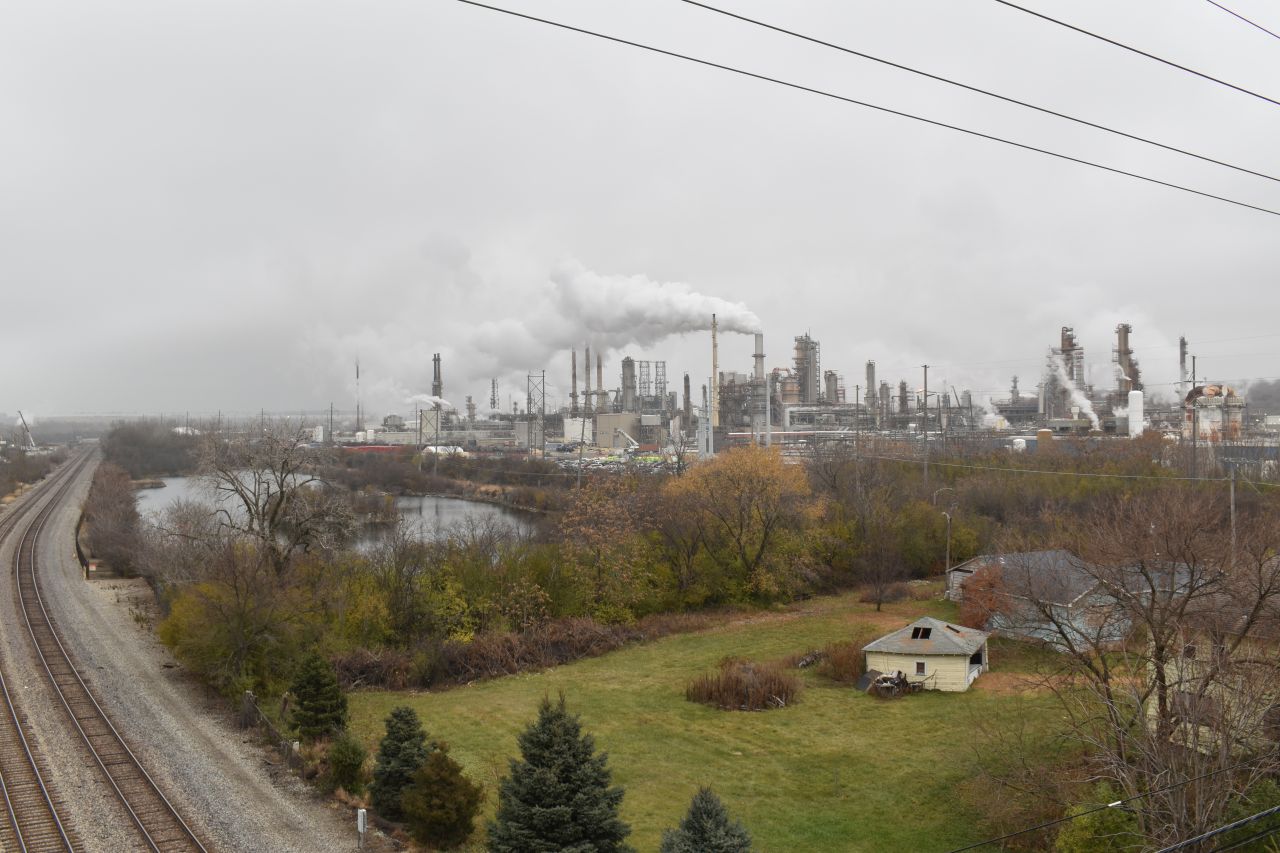Texas voters to decide whether to funnel $10 billion in taxpayer money to natural gas power plants

Next week, Texas voters will decide whether to amend the state’s constitution to provide $10 billion in taxpayer money to build more natural gas-fired power plants – a new subsidy for fossil fuels in a state that already gets most of its electricity from natural gas.
The measure on the ballot on Tuesday, known as Proposition 7, would create a “Texas energy fund” that would be used to provide low-interest loans – 3 percent – to companies building natural gas plants. The fund would also provide grants to developers who finish building gas generating units by 2029.
Critics, including consumer advocacy groups Texas Consumer Association and Public Citizen Texas, say the program would create a never-ending funnel of taxpayer money to the natural gas industry and provide gas power plants an unfair market advantage over cheaper power sources, such as solar farms or wind turbines.
“The fact is that the market is working in Texas, and it’s pushing the grid into cleaner sources, and we really ought to just let that continue to work for the benefit of Texans,” said Adrian Shelley, executive director of Public Citizen Texas.

With solar power and other renewable sources becoming cheaper, it is becoming difficult for fossil fuel generators to recoup their costs and make profits over the 30-year lifespan of a power plant, said Sandra Haverlah, president of the Texas Consumer Association, which has been following the Proposition 7 proposal.
“There were no companies that testified that said even if this passed, that they would build something as a result of the loan program,” Haverlah said. “The larger problem for generators in Texas is a revenue issue… The revenue isn’t there for a gas plant to really be there all the time.”
The proposed constitutional amendment comes more than two and a half years since Winter Storm Uri hit Texas on Feb. 13, 2021, causing widespread power outages that often lasted for days, leaving millions of residents without power or clean drinking water. More than 240 people died during the storm, which almost triggered a wider collapse of the electrical grid.
Nearly every type of power generation performed poorly during the storm. But the failure of the natural gas system caused the most severe impacts, in part because the grid in Texas relies more on natural gas-fired power plants than any other source.
In 2021, the year Uri struck, 42 percent of the electricity Texans used came from natural gas-fired power plants. Another 24 percent came from wind, 19 percent from coal, 10 percent from nuclear, 4 percent from solar, and less than 2 percent from biomass and hydroelectric power, according to figures from the Electric Reliability Council of Texas (ERCOT), not including some regions such as the Texas Panhandle.
“It appears that a lot of the generation that has gone offline today has been primarily due to issues on the natural gas system,” ERCOT vice president of system operations Dan Woodfin told reporters during a February 2021 media briefing.
Sub-zero temperature also froze coal stockpiles and took some coal plants offline due to frozen lines and other issues. Wind turbines iced over. Even the South Texas Project, a nuclear power plant co-owned by Austin and San Antonio utilities and the power company NRG, reduced output to 36 percent of its normal capacity after the winter weather brought down multiple feedwater pumps.
Solar power was the only generation source to out-perform expectations during the nearly weeklong disaster.
In the more than two-and-a-half years since the storm, natural gas-fired plants are providing an even greater share of power on the ERCOT grid. Gas generators now supply about 46 percent of the state’s power, followed by 24 percent for wind, 13 percent for coal, 9 percent for nuclear, 7 percent for solar, and less than 2 percent for hydroelectric and biomass.
Despite the problems with natural gas during the 2021 ice storm, many Texas legislators blamed the increasing share of wind and solar power in the Texas grid for the February 2021 outages. They also expressed skepticism that renewable sources, along with an increase of battery power to store energy from wind and solar, would be able to provide for Texas’s population growth.
Republican State Sen. Charles Schwertner, who authored the legislation that enabled Proposition 7, said in a committee hearing that subsides for gas-powered power plants are needed “to make sure we have that long-term resource adequacy and dispatchable generation to balance out the ever-increasing penetration of interruptibles and renewables on the Texas grid.”
The language of Proposition 7 on the ballot does not give any hints that it would benefit natural gas power producers. It does not explicitly mention any of the fuels or technologies used to generate electricity – coal, nuclear, gas, wind, solar, or hydroelectric. But buried in the legislation that created Proposition 7 is a caveat that power generators eligible for the loans must be “dispatchable,” meaning “the facility’s output can be controlled primarily by forces under human control.”
The legislation states that “an electric energy storage facility,” i.e., a battery storage plant, is not eligible for these loans. Plants eligible for loans must also be at least 100 megawatts in capacity – roughly the size of a small natural gas plant.
Instead of subsidizing natural gas plants, some experts say, the most efficient way to ensure enough power is available on the grid is to invest in energy efficiency and other measures to reduce demand for electricity, especially during heat waves and cold snaps.
For example, an October 2021 report by the American Council for an Energy-Efficient Economy found that retrofitting roughly 9 million Texas homes by 2027 would shave 7,650 megawatts of summer peak demand and 11,400 megawatts of peak winter demand and cost only $4.9 billion, far below the $10 billion cost of Proposition 7.
Shelley, who leads Public Citizen Texas, also pointed out that these measures – better insulation in attics, making sure heaters and are conditioners are the right size, and reducing drafts from doors and windows – would mean investing in property owned by Texans rather than energy firms.
“When the state makes that investment in your home, you use less electricity, your energy bill goes down, and your home becomes more comfortable,” Shelley said. “It's cooler in the summer, it's warmer in the winter. It's win-win-win.”
Lead photo: WA Parish Generating Station, a natural gas and coal power plant, in Fort Bend County near Houston, Texas on June 25, 2023. Photo by Reginald Mathalone/NurPhoto via AP.
This article has been updated to correct the spelling of Public Citizen Texas executive director Adrian Shelley's name.















